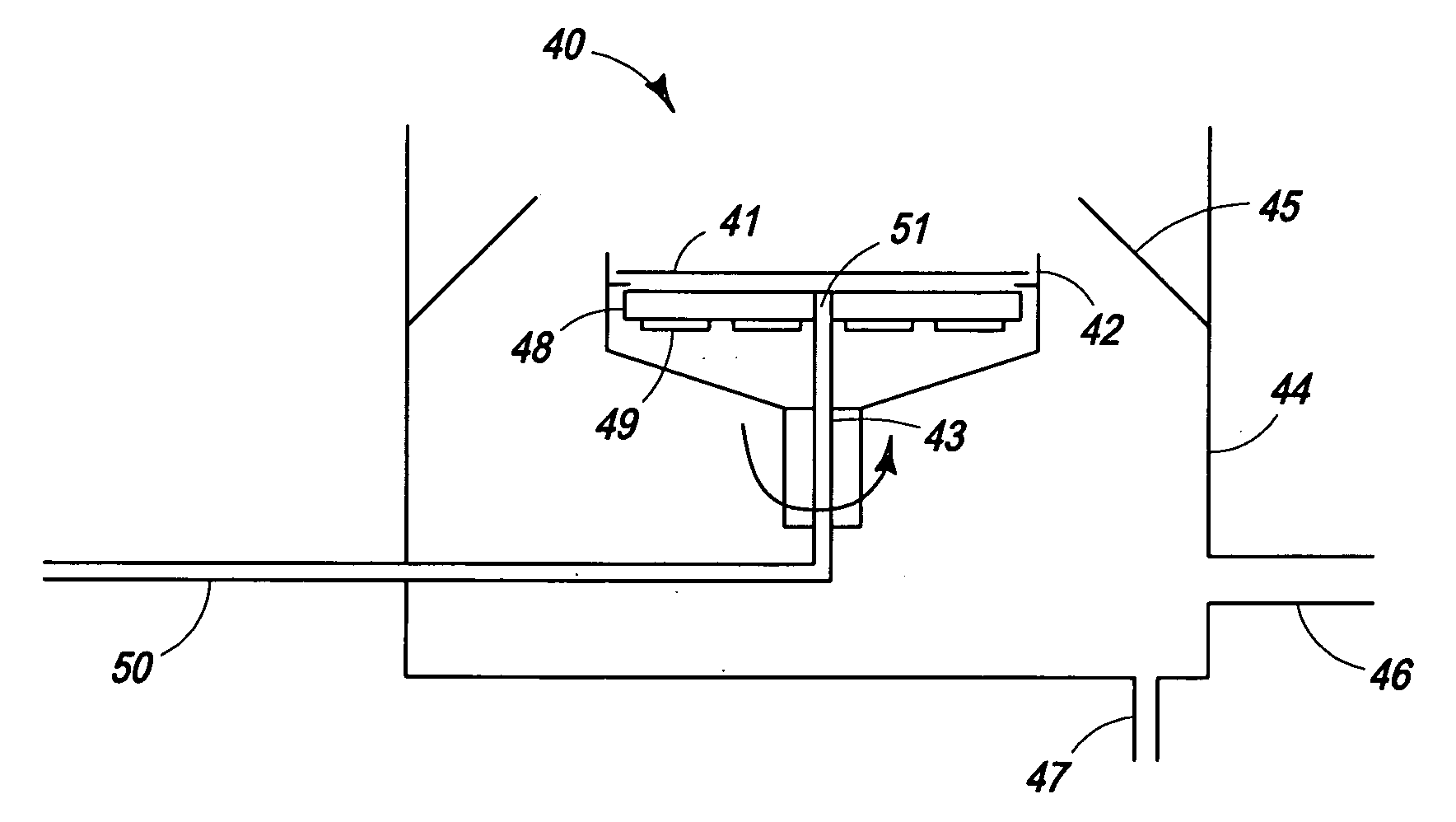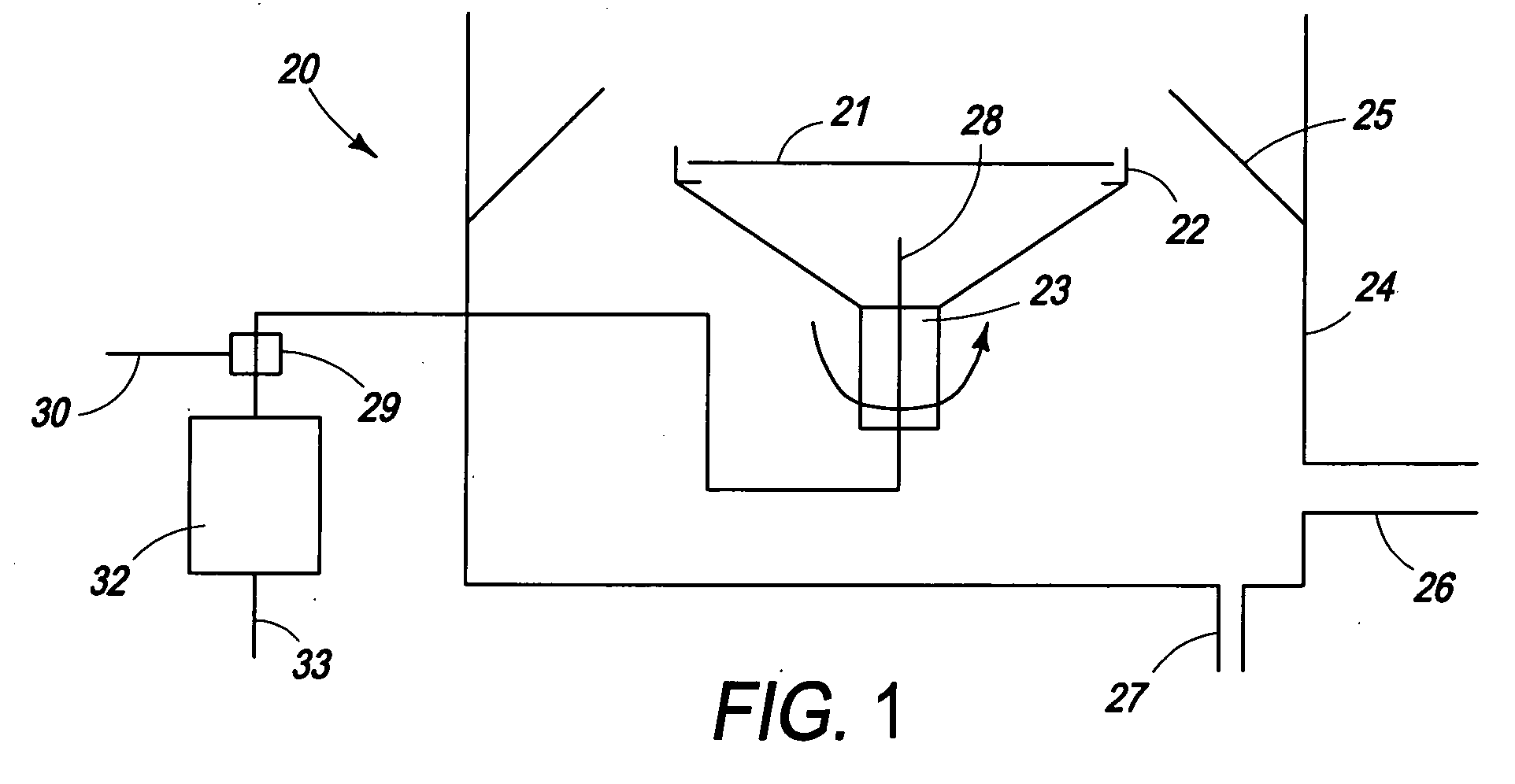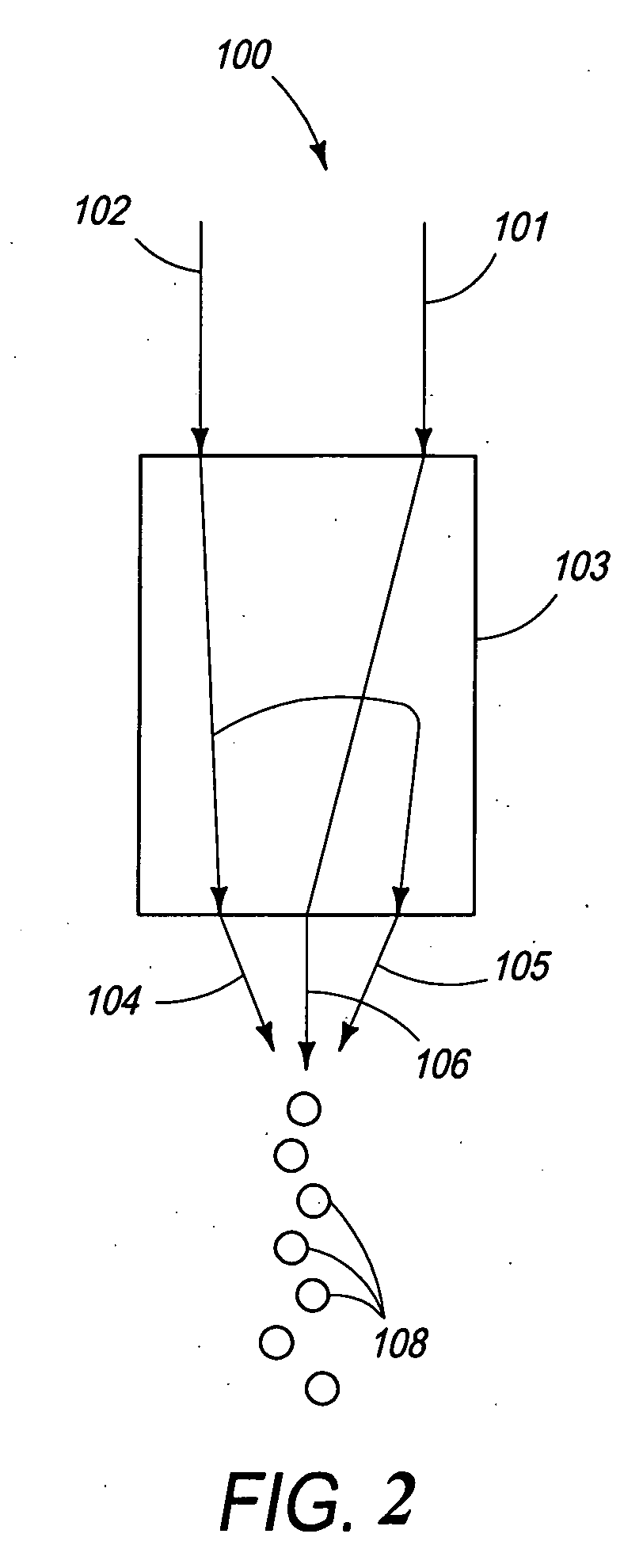Method and Composition for Cleaning Wafers
a technology of composition and cleaning method, applied in the direction of record carrier cleaning, electrical equipment, record information storage, etc., can solve the problems of avoiding damage to the cavitation of the wafer, hardly using ultrasonics on the semiconductor substrate, and virtually no particle removal efficiency when using megasonics withou
- Summary
- Abstract
- Description
- Claims
- Application Information
AI Technical Summary
Benefits of technology
Problems solved by technology
Method used
Image
Examples
Embodiment Construction
[0028]A cleaning solution used in the present invention comprises a polycarboxylate polymer solution. In one embodiment, the polycarboxylate polymers may comprise homopolymers or copolymers of acrylic acid, methacrylic acid, maleic acid, fumaric acid, itaconic acid and the like. When the term homopolymer is used, it is intended that it includes by definition, polymers that may contain quantities of about 20 mole percent or less, of one or more comonomers. In other words, a polymer containing up to 20 mole percent of comonomers will still be considered a homopolymer. The cleaning solution may also comprise a blend of the above polycarboxylate polymers.
[0029]Particularly suitable polycarboxylate polymers are prepared from monomers having the general formula (Formula 1):
[0030]Where R1 and R2 is either a hydrogen atom (H) or methyl radical (CH3, also represented by Me).
[0031]A polycarboxylate polymer (homopolymer) formed from monomers of this type can be schematically represented by the...
PUM
| Property | Measurement | Unit |
|---|---|---|
| molecular weight | aaaaa | aaaaa |
| molecular weight | aaaaa | aaaaa |
| frequencies | aaaaa | aaaaa |
Abstract
Description
Claims
Application Information
 Login to View More
Login to View More - R&D
- Intellectual Property
- Life Sciences
- Materials
- Tech Scout
- Unparalleled Data Quality
- Higher Quality Content
- 60% Fewer Hallucinations
Browse by: Latest US Patents, China's latest patents, Technical Efficacy Thesaurus, Application Domain, Technology Topic, Popular Technical Reports.
© 2025 PatSnap. All rights reserved.Legal|Privacy policy|Modern Slavery Act Transparency Statement|Sitemap|About US| Contact US: help@patsnap.com



